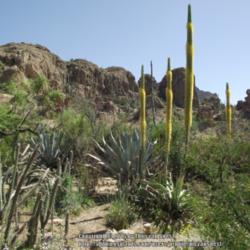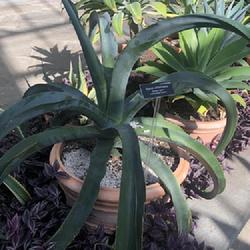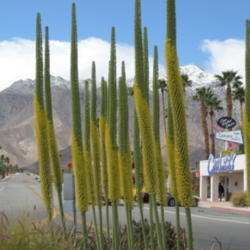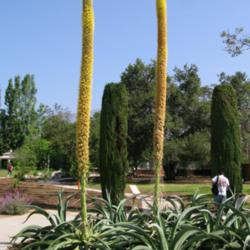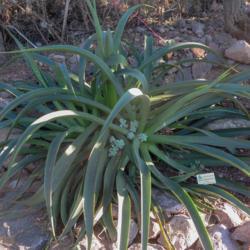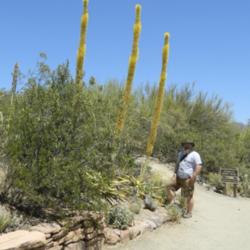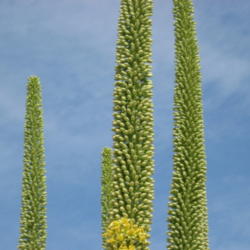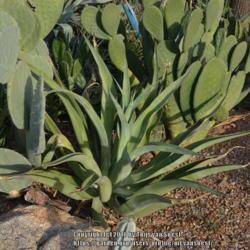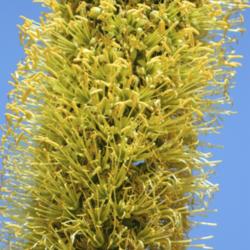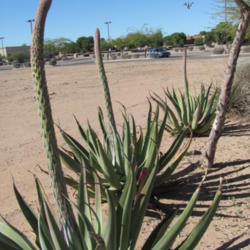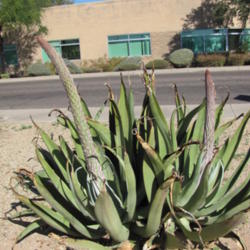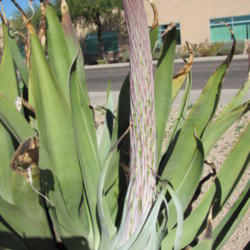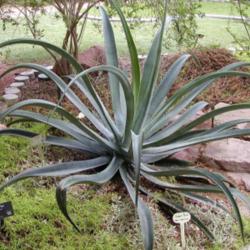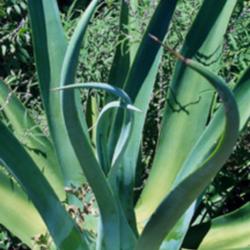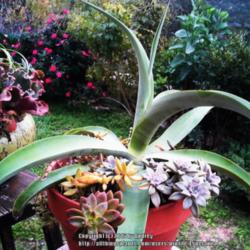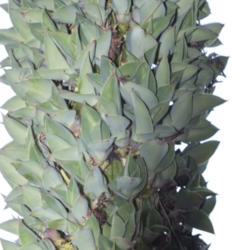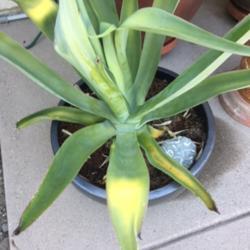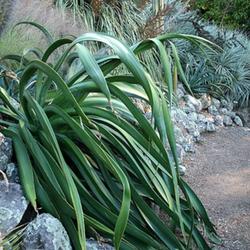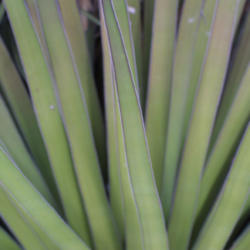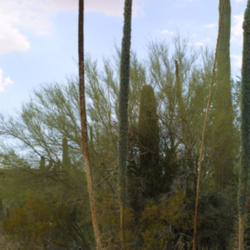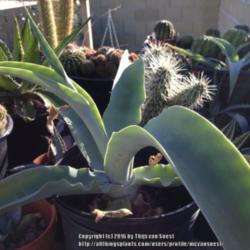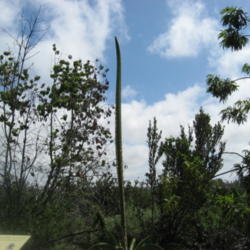Posted by
mcvansoest (Tempe, AZ - Zone 9b) on Feb 20, 2018 9:57 PM concerning plant:
This is a very rewarding Agave to grow. It generally has a very nice shape as its common name, 'Octopus Agave,' already suggests. It does tend to lean towards the sun a bit as it grows. Given its relatively thin leaves, it is surprisingly resilient in terms of sun exposure here in Arizona, where plants almost seem to do best exposed to as much sun as possible. It does like some summer water, but takes neglect very well.
Size-wise, this plant would fall in the large-medium sized Agave category, it does not get humongous, but it does attain a pretty good mature size in the 4-5 foot tall range and 6-8 foot diameter. While I have seen some pups/offsets, most plants are solitary, but it makes up for that when flowering!
As Agaves go, this is also one of the less dangerous ones. Its leaves are generally toothless, though some have very, very small teeth that are closely spaced, but they tend to be pretty soft and not harmful. There is a terminal spine, but the leaf ends are pretty pliable and there is not a lot of danger of impalement, which you do get with many other Agaves. It is always a good thing to be careful around Agaves, though.
In terms of reaching mature flowering age, Agave vilmoriniana is relatively quick, with most plants reaching flowering size in 5-10 years. When it does flower, it puts up a tall spicate inflorescence that tends to remain erect and is densely populated with flowers, as can be seen in the many pictures associated with this entry. The flowers are yellow, and while the plant does set seed, it also produces an incredible abundance of bulbils on its flower spike that are best harvested when there are 3 sets of leaves on the bulbil. The bulbils readily root and make this a very easily propagated plant. As with almost all Agaves, the main plant will die after flowering, though I have seen some specimens hang on, looking somewhat reasonable for many months after the flowering event is over.
I grow my plant in full sun and only during the hottest parts of the summer does it suffer a bit, but generally a regular once per week/two weeks watering regime keeps it looking good.
